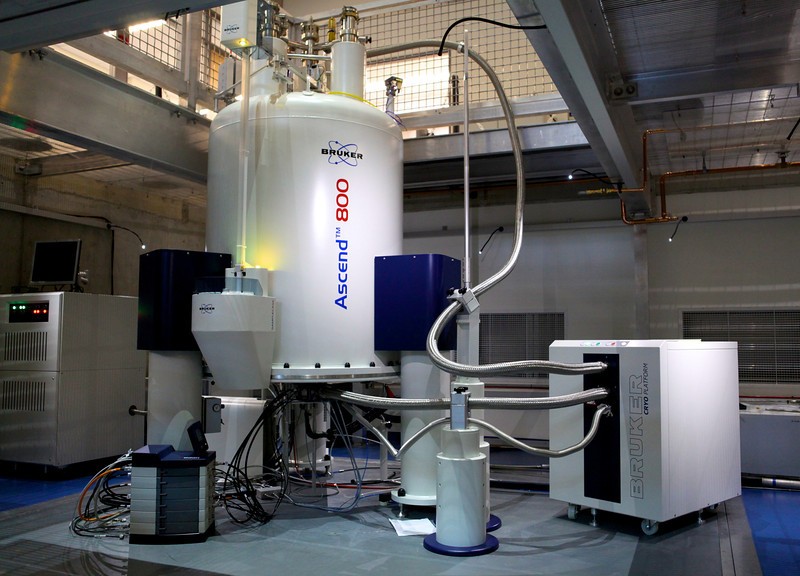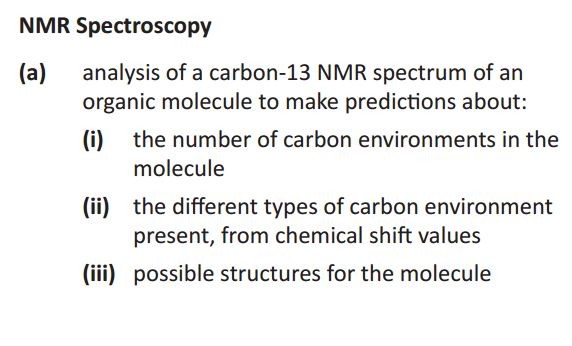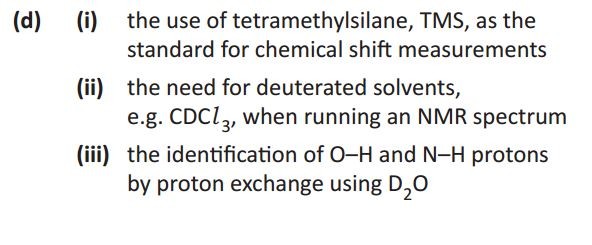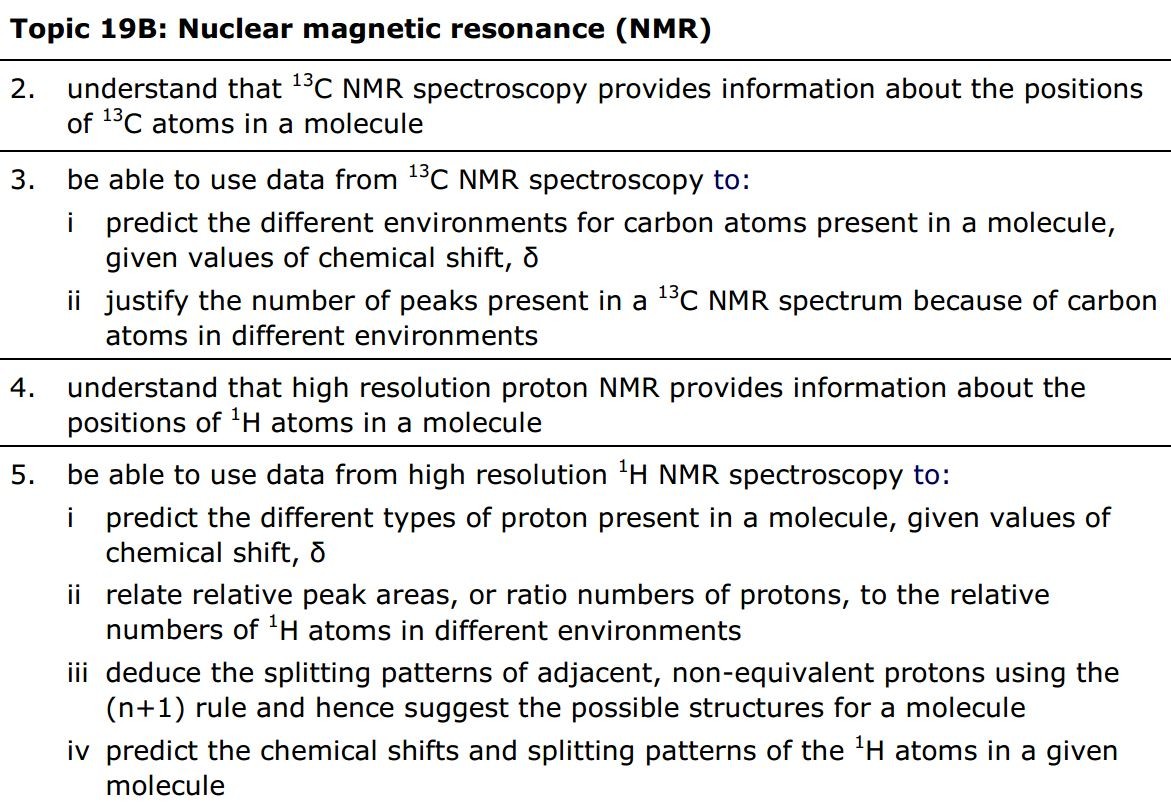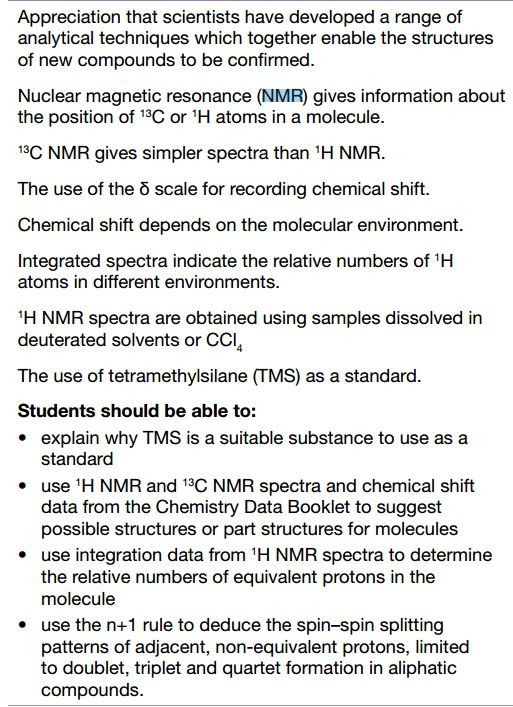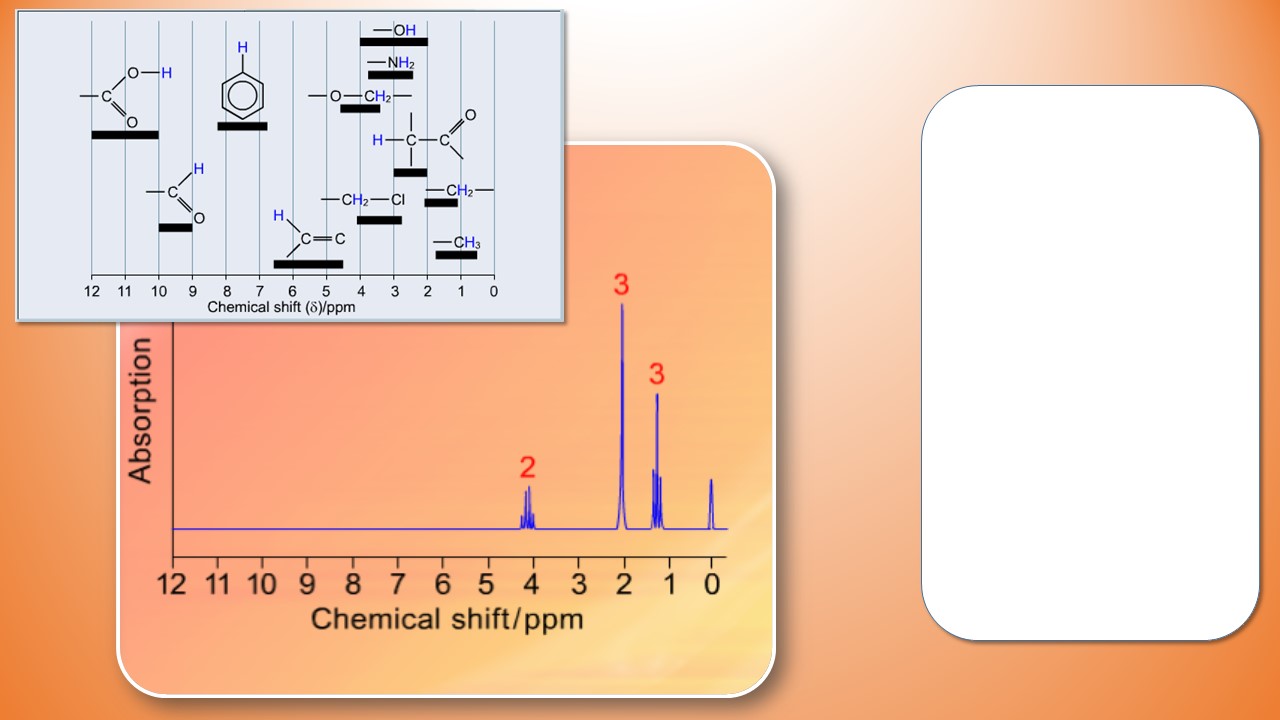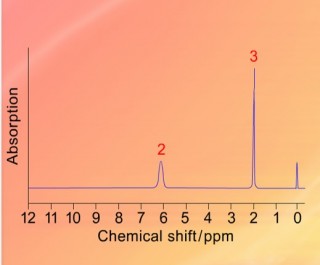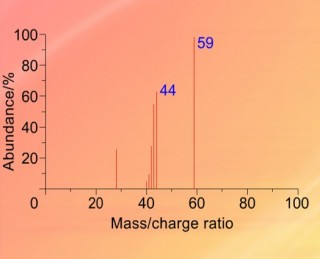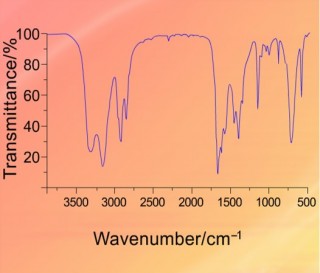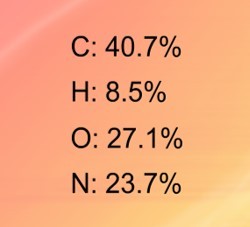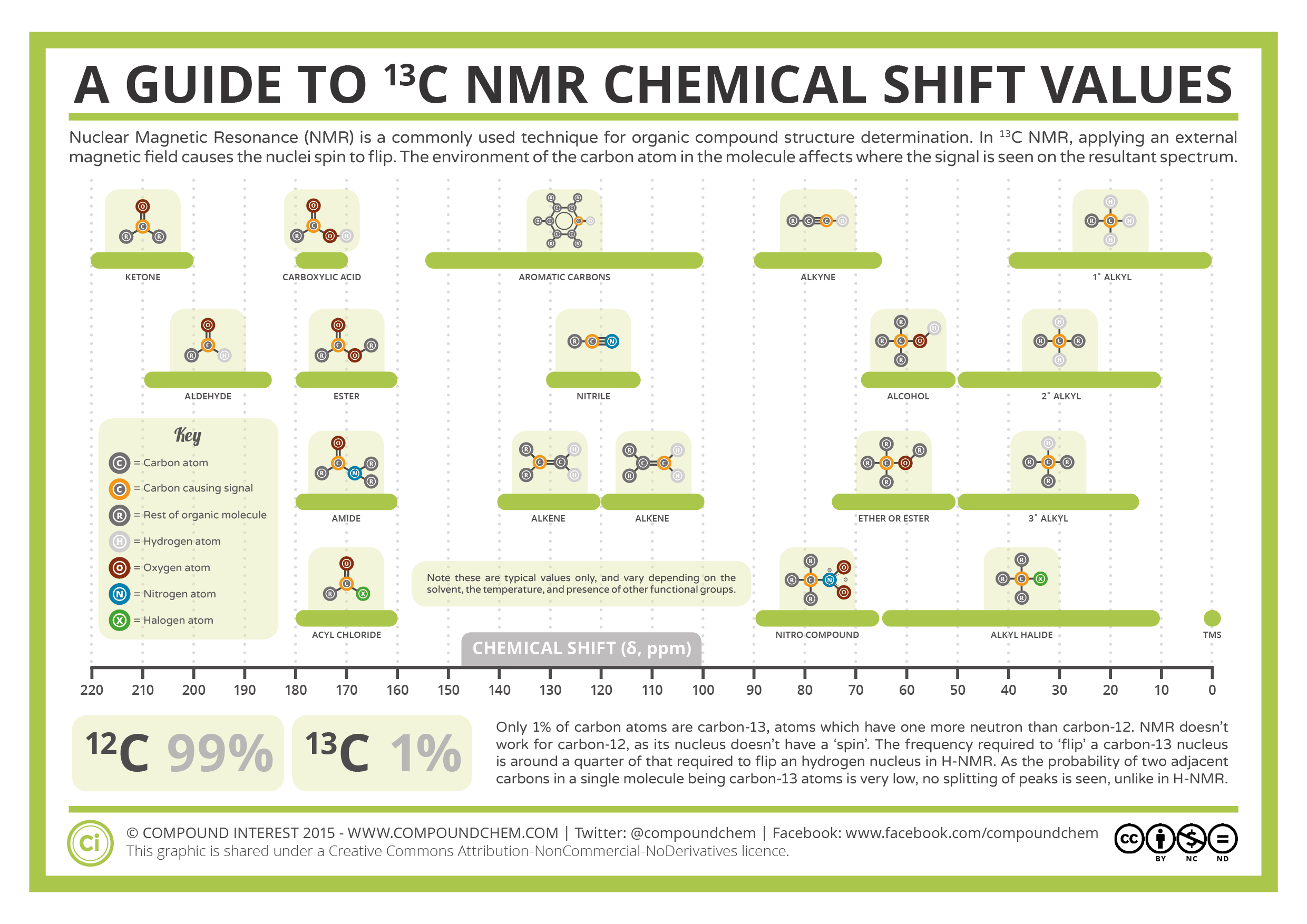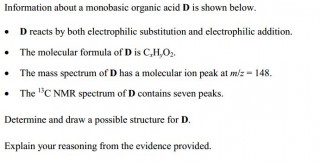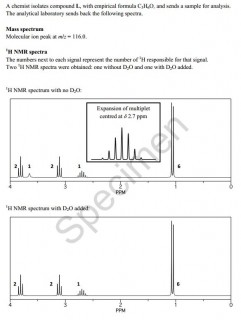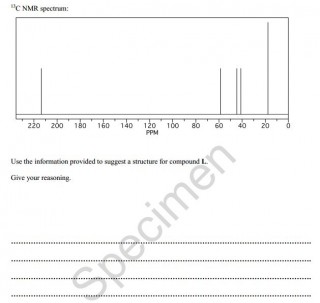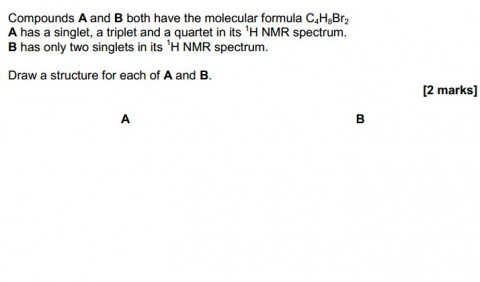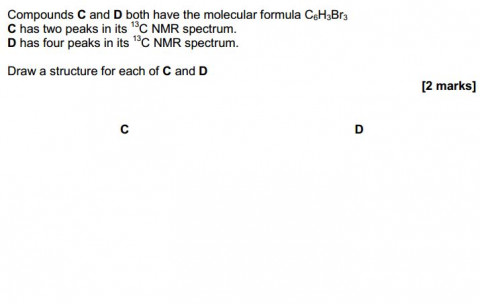NMR Spectroscopy
Looking at the protons
High resolution NMR - reveals a splitting pattern.
This is produced because protons on neighbouring carbon atoms can have an effect on the magnetic ("chemical") environment experienced by a given proton.
The effect will depend upon whether the proton is aligned or opposed.
Alignment will lead to a stronger magnetic field . Opposition will weaken the field.
The number of protons on a neighbouring carbon atom will dictate the number of combinations of aligned and opposed protons and therefore the number of sub environments number of sub peaks in the spectrum.
A couple of problems:
When you subscribe to the blog, we will send you an e-mail when there are new updates on the site so you wouldn't miss them.
